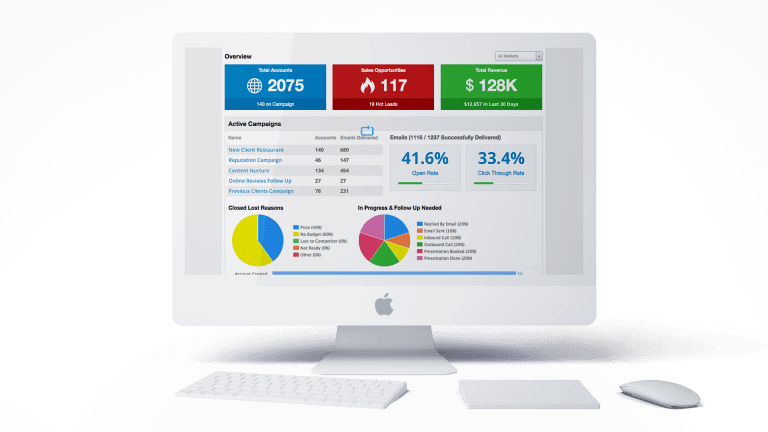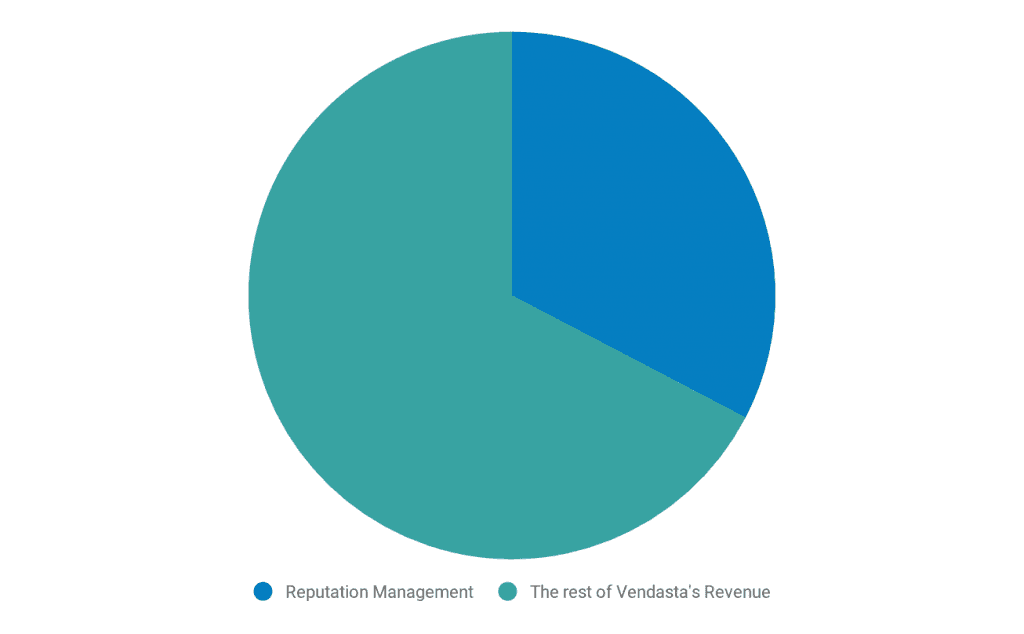
So you’ve been asked to write a sales report, and you’re probably wondering “Sales reporting? Where do I even start?” Don’t worry, we’re here to help with sales reports examples you can steal (don’t worry, we won’t tell). Sales reporting is crucial for demonstrating if quotas are being met, showing how teams are performing, and helping to guide sales efforts going forward.
As many as 48% of underperforming organizations have non-existent or informal sales processes (B2B Sales Management). Effective sales reporting processes will help your organization to improve productivity and fast-track client growth. That’s why we’ve penned this blog, complete with handy report templates—to help your team sell harder, better, faster, and maybe even stronger.

"Reporting is the most important factor when it comes to holding your team accountable for their efforts on a daily, weekly, and monthly basis. You need to make sure the efforts are there to achieve the results you’re looking for. Expecting results without the accountability is insanity."
Todd RobertsDirector of Sales , Vendasta
Like most things in life, sales reporting is most successful when you know how to prepare for the job. These six best practices are designed to help you break down the process of sales reporting so you can tackle it piece by piece. We’ll go through choosing an audience, gathering metrics, reporting for time-frames, using graphics, and finally adding context.
First of all: it’s important to know who you’re writing your report for. Sales managers need different information than, say, new salespeople in order to make the right decisions. Consider who will be reading this sales report, and use that information to guide what you include in the report.
What information is most important to your audience?
A sales reports example for someone in a senior management role should include numbers relating to the value of their investment compared to the measurable outcomes from their sales team. By contrast, a sales manager reporting to their sales team may want to focus on the progress toward forecasts and the overall productivity of the team.
Salespeople can also benefit from doing sales reporting of their own. Regular reporting can help salespeople to refine their pitches, focus their efforts toward personal and team goals, and track their revenue.
Knowing who will be reading your report will help you to focus on information that contributes value to them in their role. Figure out what your reader wants from you, and create a sales reports template that meets their needs.
Now that you’ve identified your audience, you can focus on gathering the most helpful information—both qualitative and quantitative. After all, reporting doesn’t end once you’ve thrown in some numbers. The best sales reports examples include qualitative information that contextualizes and reinforces trends and results, whether they’re good or bad.
If you’ve never tracked sales before or you’re just starting out, before even looking at sales reports examples, start by asking yourself what you’re trying to accomplish. Tracking your sales metrics will help you to answer the big questions such as:
Google sheets and Microsoft Excel are great tools for beginners in learning how to organize your sales data. But, if you’re not a spreadsheet wizard, a dashboard system is a superior tool to start sales reporting.
Getting set up with a sales reporting dashboard will certainly give you useful reporting data such as:

Want to learn how to simplify more than just your reporting? Check out how you can automate your entire sales process through an automated sales dashboard.
Furthermore, remember that the goal of a report is to create a comprehensive picture of what’s going on at a certain point in time and will help you understand what needs to happen in the future. The information you choose should be closely related to performance outcomes, day-day sales operations, and key performance indicators (KPIs).
You’re going to want to cram everything in—but it’s best to resist that temptation.
Less is MORE.
Establishing a time frame will help you select the right information to report and will allow for easy comparison from period to period.
Your report should focus on the objectives you’re trying to meet and the numbers that relate directly to them. For example, if your objective is to grow the value of your existing customers, you may want to lengthen your call time with your existing customers during weekly calls.
Including graphics such as bar charts and line graphs can simplify dense information and show change over time at a glance. All the best sales reports examples have them. You don’t want to put your audience to sleep, and almost no one wants to stare at a spreadsheet for too long—no matter how helpful they can be. The information you’re presenting isn’t always common knowledge, so it’s important to make it succinct and digestible.
A well-placed chart can make all the difference in how your salespeople change their actions for the future. A bar chart may help you illustrate target vs. actual achievement, or a pie chart may demonstrate how each product has contributed to overall sales.
Add helpful illustrations to your report and there will be no confusion when you are presenting your numbers. Besides, everyone likes to see those lines going up and to the right…right?!

The best sales reports examples are clean and clutter free. Analyze your report and cut unessential information. There’s no reason to share information with people who don’t need it and won’t use it. Your audience should feel like you’ve given them value after reading your report, so make sure it’s easy to skim and pull out the most important information. People are busy, and keeping your reports uncluttered and to the point shows that you respect the reader's time.
Presenting your data in a spreadsheet is necessary, but adding context to your numbers is what will really grab someone’s attention. For example, if your lead conversion ratio is down from the month before, it’s important to use the opportunity to discuss the quality of the leads coming in or reasons why the leads coming in aren’t closing.
Connect the data to the performance.
Showing the numbers is one thing, but explaining why these numbers are crucial to day-day objectives is going to lead to a more informative report and more profitable outcomes for the future. Your numbers are the foundation, but it’s up to you to paint a clear picture of overall performance, what areas are suffering, and what you can improve. A sales intelligence tool can be helpful for quickly getting an accurate picture of how a business is performing, which can help contextualize data.
Some metrics and data don’t always fit certain time frames, so it’s important to be familiar with the various time periods you can use when writing a sales report. We’ll provide sales reports examples in just a moment, but first, let’s take a look at how sales reporting works at three levels: daily, weekly, and monthly.
Daily sales reports provide a snapshot of a business's sales performance on a day-to-day basis. They can help businesses identify trends and patterns in their sales data, such as which products or services are selling well, which sales channels are most effective, and which days of the week are busiest. This information can be used to make real-time adjustments to sales strategies and improve overall performance.
Daily sales reports examples should include information that relates to daily progress. As an example, you probably wouldn’t include enterprise closes in your daily report, as more often than not that number would be a zero, adding unnecessary clutter to your report. Instead, include lead data that came in each day, since that number is likely to be more significant at the daily level.
“The #1 driver for your sales team is the alignment between compensation, and the behavior that you need the team to accomplish their goals on a daily basis" - Doug Campbell, VP of Revenue.
A few data points that you should consider including in daily sales reports examples includes:
Weekly sales reports provide a broader view of a business's sales performance over a given week. They can help businesses identify trends and patterns that may not be apparent from daily sales reports. Weekly reports can also help businesses track progress toward their sales goals and make strategic decisions about resource allocation and sales strategies.
Weekly sales reports examples should include insights about trends over time without necessarily having to wait for monthly reports to roll around. Managers are going to be looking at sales tactics, successes, wins that week, as well as who is leading in sales and why.
Some data you’ll want to report on will be:
Monthly sales reports provide a high-level view of a business's sales performance over a given month. They can help businesses identify long-term trends and patterns, such as seasonal fluctuations in sales, and make strategic decisions about product development, pricing, and marketing. Monthly sales reports can also help businesses set realistic sales goals for the coming months and track progress toward more long-term goals.
Monthly sales reports examples generally include some information about what to expect for the rest of the quarter. Monthly reporting can be a competitive time, especially when determining who is the top closer of the month.
Important data to report on include:
As you can probably expect, sales report templates become progressively more complex as they cover longer periods of time. A daily report generally has less information than, say, a monthly report. These sales reporting templates are a perfect starting point that you can use to create your own sales reporting.
This example sales report captures a snapshot of daily activities and is concise enough not to be overwhelming.
This example sales report includes a bit more information than a daily sales report, with a focus on goals as well as daily performance.
This example sales report zooms out further, demonstrating how monthly sales reporting should include some trends analysis.
The example sales reports above are based on time scales: a simpler sales reporting template for the daily level, an intermediate weekly sales reports template, and more detailed monthly sales reports.
This isn’t the only way to structure your sales reports template. Sometimes, you might want to zero in on the various stages of your pipeline, like in the following example.
Sales Pipeline Summary:
Sales Stage Breakdown:
This sample sales report draws attention to how full each stage of the pipeline is, helping to understand if there is a healthy, even distribution throughout.
Product and Channel Trends:
This sample sales report can be used at any time scale and is designed to zero in on the performance of specific sales channels and products, helping businesses make better decisions.
There you have it! Easy-to-follow best practices to follow to start creating your own sales reports, and 5 sales reports examples you can start using today.
To summarize, you should know your audience, gather information, pick your time frame, use clear illustrations, be concise, and remember to add context. Don’t put it off any further—sit down right now and just start! Take a look at the sales reports templates included in this blog to get some ideas for starting your own. I challenge you to set yourself up with a dashboard and start your sales reporting today. It’ll only simplify your life for the better and help you stay on track.